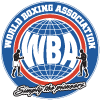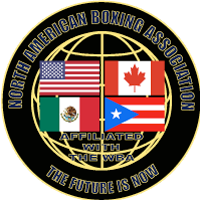All spaces considered socially public have been historically restricted for women and the sport was no exception. Since 1714, in England, when Elizabeth Wilkinson was the monster who amused by presenting herself in the ring until she became a champion without legal recognition, there were other women who dedicated themselves to this until Barbara Buttrick in 1930, who became a pioneer of women’s professional boxing, to which she dedicated from 1948 and became the first public figure.
But she did not succeed in her homeland; she had to emigrate to the United States to be able to enjoy what she loved to do most while she was being degraded for loving the noble art of fisticuffs.
In the history of the Olympic Games, for example, which date back to about 700 B.C. in ancient Greece, women were punished to death if they dared to participate athletically, so men were obliged to compete naked, which is why married women were also punished if they dared to be spectators. Similarly, in many boxing gyms our presence was forbidden because we were considered to be a distraction for the men…
The modern Olympic Games were created in 1896 thanks to Baron de Coubertin with the virile motto “Citius, Altius, Fortius” (Higher, Stronger, Faster) which, for him, excluding women, the Olympic values upheld were world peace, brotherhood among people and the integral education of youth… Then female participation was accepted for Paris 1900 in sports “suitable for us” such as golf and tennis. In 1904, a women’s boxing exhibition was held, but it was not until London 2012 that it was definitively included.
Returning to professional boxing, Barbara Buttrik retired with only one defeat out of the 32 fights she fought until 1960. Many others were encouraged along the way until 1996, a moment considered as a new beginning, when two women (Christy Martin and Deirdre Gogarty) fought on the undercard of an event where the starring role was for none other than Mike Tyson against Frank Bruno. The female bout in question stood out on that event for its temperamental and violent nature, to the point of overshadowing the closing fight.
The sports market became convinced of the commercial opportunity that was opening up for women and began to promote it. That same year (1996), the Amateur Boxing Association of Great Britain repealed the ban on boxing for women that dated back to 1880. The final breakthrough came in 1997 when the United States organized the first women’s boxing championship. Since then, other countries have been authorizing and organizing women’s boxing, winning world championships in all categories.
Despite proving that they can put on a show, we continue to hear that they do not sell as well as men as excuses to continue paying less for women’s boxing. Despite demonstrating that they can box and hundreds of women have achieved the championship dream, they continue to question their physical performance and capabilities. Despite demonstrating that beyond boxing they are feminine, the terms “macho” or “lesbian” continue to be used to describe them for what they choose to practice. Why are so few women’s fights included in the big card? Why are there so few women on boxing programs? Can’t women talk about boxing?
Every day they put the maximum effort in the gym and give everything in the ring to keep hearing from many that it is ugly to see two women fight because they are delicate, fragile and should keep that instead of showing off doing what they are passionate about.
We have come a long way and this Saturday’s fight between Erika Cruz and Amanda Serrano is proof of that. The spaces that women have won have been based on effort and perseverance, so we must celebrate moments like this.
But there are still many walls to knock down and in view of the facts it is no longer necessary that we continue to be subjected to constant examinations of what we can give, of what we can say: women who box do the same task as men, with the same passion. Why is the money still less? Why is the number of rounds and their duration in professionalism not equalized? What are the present justifications? Yes, women have less testosterone than men, which makes the muscle mass take a little longer to increase and the forces are lower but that does not make us weak, we are strong women who love boxing. We are not ladies in waiting as we were considered in ancient times, we are independent with intelligence and qualities. It is not about us wanting to be more or men wanting to be more than us, it is about us respecting each other, accepting our differences as individual beings and valuing each other. Men and women coexist so let’s work together and contribute to a better sport.

















